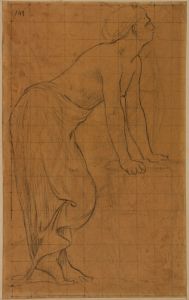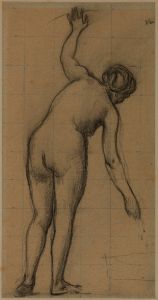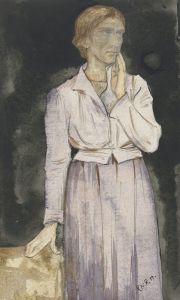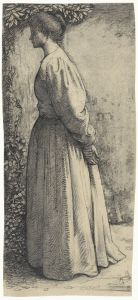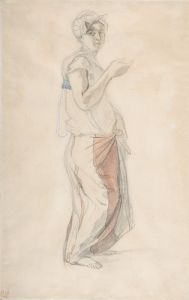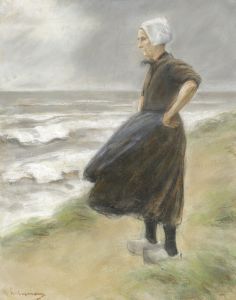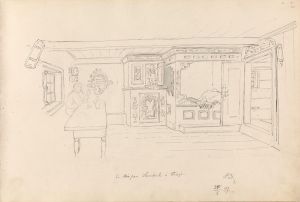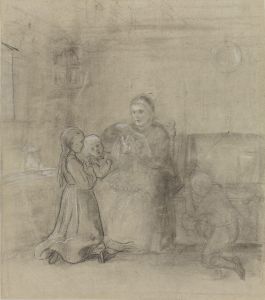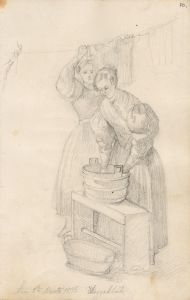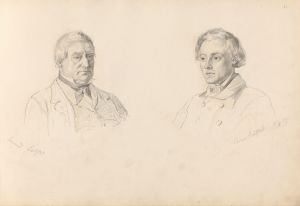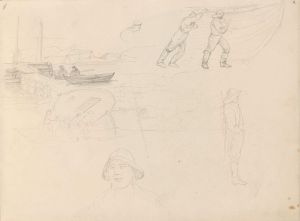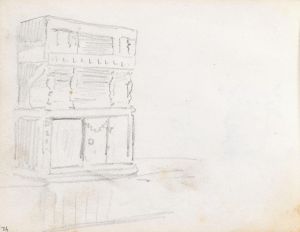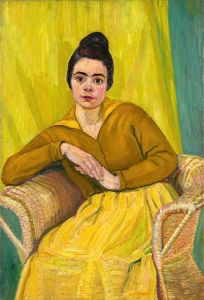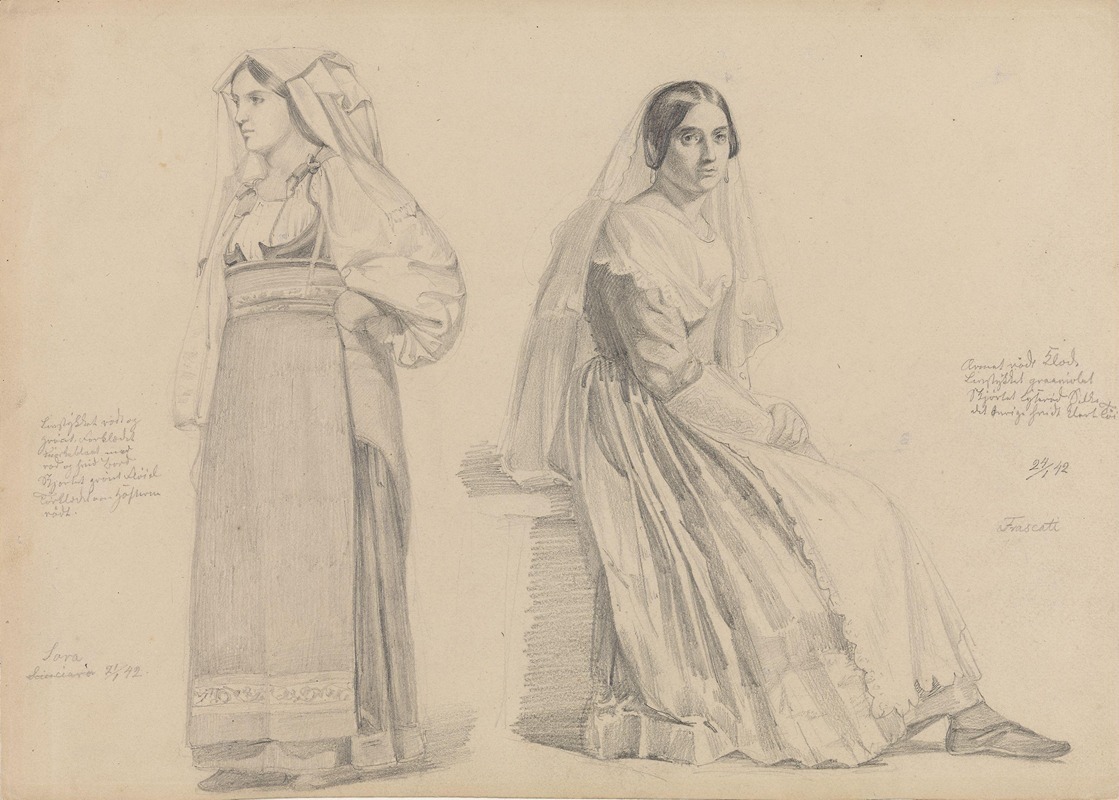
En stående og en sittende kvinne
A hand-painted replica of Adolph Tidemand’s masterpiece En stående og en sittende kvinne, meticulously crafted by professional artists to capture the true essence of the original. Each piece is created with museum-quality canvas and rare mineral pigments, carefully painted by experienced artists with delicate brushstrokes and rich, layered colors to perfectly recreate the texture of the original artwork. Unlike machine-printed reproductions, this hand-painted version brings the painting to life, infused with the artist’s emotions and skill in every stroke. Whether for personal collection or home decoration, it instantly elevates the artistic atmosphere of any space.
Adolph Tidemand was a prominent Norwegian painter in the 19th century, known for his detailed and culturally rich depictions of Norwegian life and traditions. One of his works, "En stående og en sittende kvinne" (translated as "A Standing and a Sitting Woman"), reflects his interest in capturing the essence of Norwegian rural life. Although specific details about this particular painting are scarce, Tidemand's body of work provides context for understanding its significance.
Tidemand was born on August 14, 1814, in Mandal, Norway. He studied art in Copenhagen and later in Düsseldorf, Germany, which was a hub for artists at the time. The Düsseldorf School of Painting, where Tidemand honed his skills, was known for its emphasis on detailed realism and historical themes. Tidemand became one of the leading figures of this school, and his works often focused on Norwegian folklore, customs, and the everyday life of Norwegian people.
"En stående og en sittende kvinne" likely fits within Tidemand's broader oeuvre, which often depicted scenes of rural Norwegian life with a focus on traditional costumes and settings. His paintings are characterized by their attention to detail and the ability to convey the cultural and social aspects of 19th-century Norway. Tidemand's works are not just artistic expressions but also serve as historical documents that provide insight into the lives of Norwegian people during this period.
Tidemand's interest in Norwegian culture was part of a larger national romantic movement that sought to celebrate and preserve national identity through art. This movement was particularly significant in Norway, which was seeking to establish its cultural identity separate from Denmark and Sweden. Through his paintings, Tidemand contributed to this cultural renaissance by highlighting the unique aspects of Norwegian life and traditions.
While specific information about "En stående og en sittende kvinne" is limited, it can be inferred that the painting likely features women in traditional Norwegian attire, a common theme in Tidemand's work. His paintings often depicted women in various roles, from domestic settings to participating in cultural rituals, showcasing the integral role of women in Norwegian society.
Tidemand's work was well-received in his lifetime, and he gained considerable recognition both in Norway and internationally. His paintings were exhibited widely, and he received numerous commissions, including works for the Royal Palace in Oslo. Tidemand's legacy continues to be celebrated in Norway, and his works are held in high esteem for their artistic merit and cultural significance.
In summary, while specific details about "En stående og en sittende kvinne" are not readily available, understanding Tidemand's broader body of work and his role in the national romantic movement provides valuable context. His paintings remain an important part of Norway's cultural heritage, offering a window into the country's past and the everyday lives of its people.





